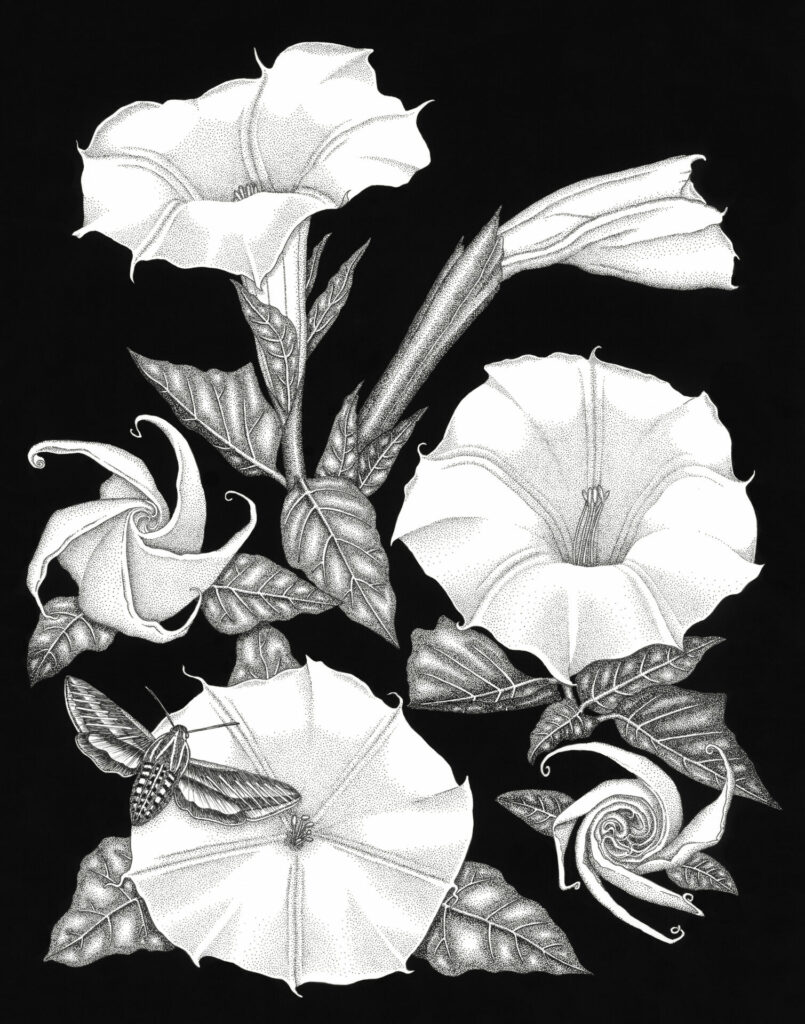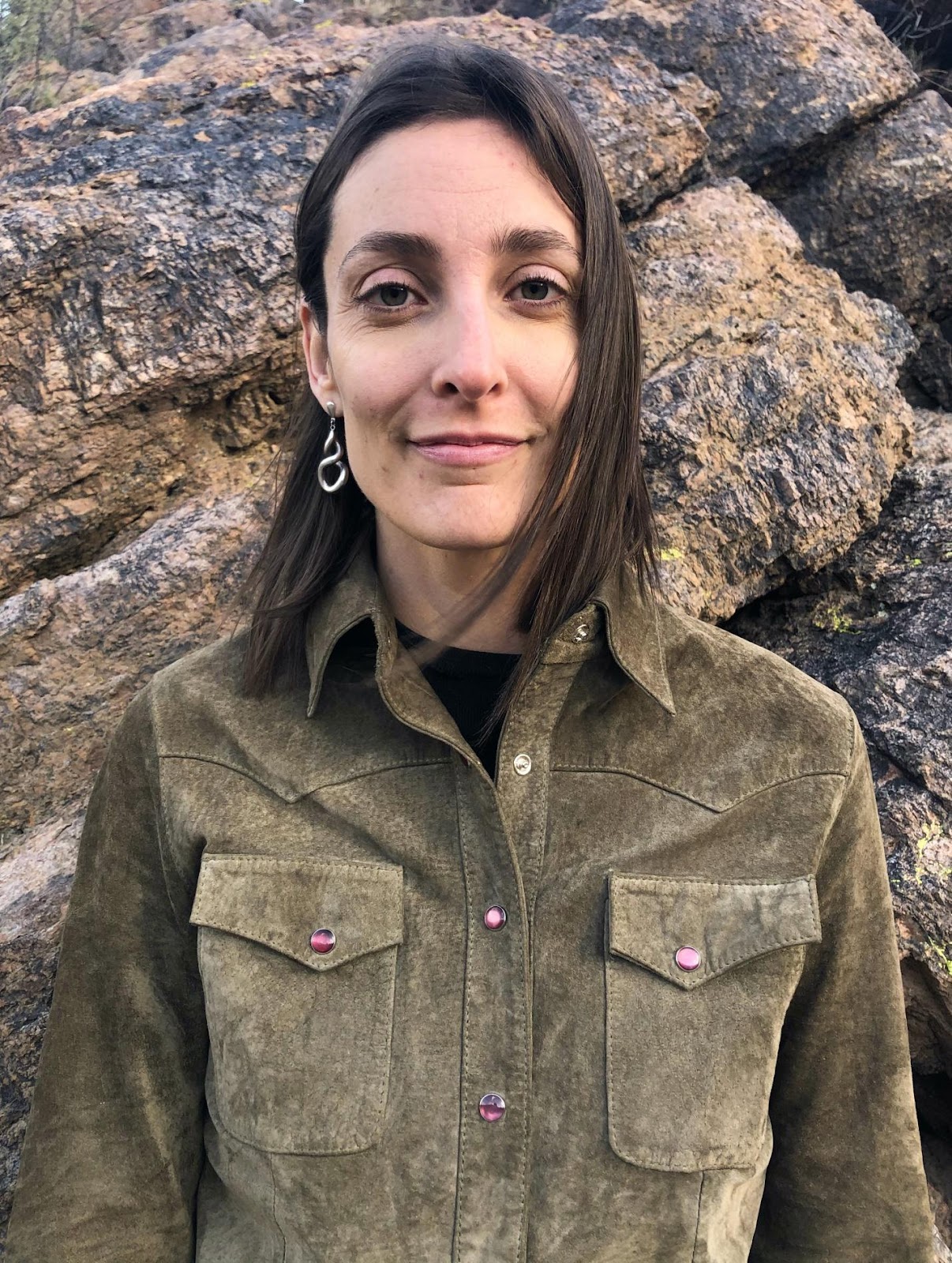
We live among the dead. We live among the yet-to-be. Our living, our breathing, our becoming, layered on top of theirs – crossing them in sleep and dreams, in our wandering and wondering. Nobody, nothing ever really goes anywhere.
We are not as alone as it seems.
The world is not as physical as it appears.
The future is not as distant as we may think.
Datura is a point between worlds. They become a full moon at night, a withered memory the next day. All the while future potential lies await in seed, bud, and the uncurling spirals of new flowers. They are simultaneously living and dying— blurring the sometimes-perceived hard line between these stages. The White-lined Sphinx Moth is a primary pollinator, visiting the magnificent flowers in the late spring and summertime. They are travelers who know the way between.
We are not as alone as it seems.
The world is not as physical as it appears.
The future is not as distant as we may think.
Like the Datura, we are also everything at once. Old parts die, new ones emerge, we transform. Constantly. Our external lives mirror this process. What and who is beside us will only be for some time. When the space opens, new arrangements emerge. Like a call and response, the ever-shifting inner and outer influence each other in a weaving alchemical process. When we allow it, we are able to be fully present to what is. Death occurs so life in its own beingness can continue.
We are not as alone as it seems.
The world is not as physical as it appears.
The future is not as distant as we may think.
About the Author

Maria Renée Johnson is a visual artist, writer, educator, and grief-worker whose work explores animism, connection, place, and change. All she creates is in collaboration with the living world. A current project is facilitating community spaces for those grieving ecological collapse. Though she’s called many places home, she currently resides in her birthplace, the Sonoran Desert, where the coyotes sing and nighthawks swoop at dusk. www.maria-renee.com
Return to top